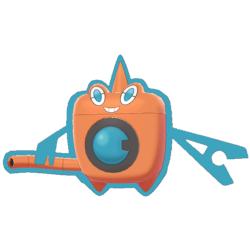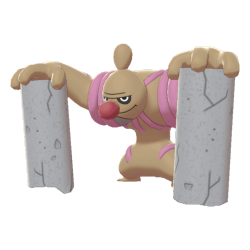The region of Oceania has crowned a new International Champion in Marco Hemantha Kaludura Silva. Silva’s run throughout this tournament was nothing short of impressive, finishing 12-2 over two days of Swiss and finishing off a tough Top 8 gauntlet with a victory over the defending Oceania Champion, Eduardo Cunha. Some could argue that Silva’s journey to the finals was blessed by some fortunate circumstances going his way, especially in his Top 8 match versus Eric Rios (Dracovish was on point with its Rock Slide flinches). Nevertheless, he was able to capitalize on his team’s favorable matchups and ultimately claim the title.
With the 2020 format’s first International Championship in the books, there’s a lot to unpack concerning the state of the metagame. The “standard” has all but been established at this point, but players have done their best to mix things up in order to improve their matchups. Here are some of our major takeaways from the Oceania International Championships.
Results & Teams (Top 8)
![]()
Togekiss Dominates the Usage Charts
Togekiss has cemented itself as the best Pokemon in the current VGC metagame by far. It appeared on 29 of the 32 teams that made it to the second day of Swiss, putting it’s usage at 90% (but it unfortunately failed to win the entire tournament).
Dynamax has been a blessing for Togekiss, allowing it to be an offensive menace with the ability to abuse Weakness Policy and the speed boosts from Max Airstream. Togekiss supplements this with outstanding offensive coverage and well-rounded stats that allow it to hit solid benchmarks for offense, defense and even speed.
Speaking of defense, the other side of Togekiss’ game is its bulk and support capability. Togekiss has access to the invaluable Follow Me and a plethora of other amazing support moves which can make its moveset somewhat unpredictable at times. In Oceania, players whipped out moves like Yawn, Helping Hand, Ally Switch with the list going even further. Babiri Berry has been a boon for Galar’s Fairy-types, and Togekiss is no exception, allowing it to take on some of the metagame’s most powerful Steel-types like Durant and Duraludon.
Togekiss’ sheer versatility will likely keep it as the metagame’s top Pokemon for the entirety of the format, and it’ll be interesting to see how far players will continue to push its viability.
Don’t Cry, They’re Just Fake Tears
VGC 2020 has been the year of de-buffing moves, with one of the most popular ones out there being Fake Tears. Fake Tears has made the format a haven for Special Attackers, with many of the format’s top offensive threats being Pokemon like Duraludon, Togekiss, Inteleon and the Rotom forms (just to name a few).
Two of the metagame’s best supportive Pokemon in Whimsicott and Grimmsnarl both have access to this powerful move, and their added utility for providing speed control and further buffs/de-buffs have quickly catapulted their usage to the top.
Dynamax has been a big factor in the rise of moves like Fake Tears, as the extra push in damage makes Max Moves even more likely to score KO’s and Dynamaxed Pokemon much easier to KO for non-Dynamaxed Pokemon.
The stat buffing/dropping game will only continue as the 2020 metagame progresses, and combining Fake Tears support with the format’s plethora of powerful special attackers will likely persist as one of the top strategies.
Is It Over For Trick Room Teams?
What looked to be a strong team archetype at the beginning of the season, Trick Room teams look to have fallen off hard. Not a single one of these “hard” Trick Room teams made it to Day 2 in Melbourne, with not even Rhyperior or Torkoal managing to make it past the first day of Swiss. What happened?
It seems that players have shifted to more balanced teams with the option for Trick Room. Instead of entire teams being reliant on Trick Room, a lot of teams are often carrying combinations of Trick Room setters like Dusclops and Jellicent alongside slower Pokemon like Conkeldurr.
Tyranitar’s dominance of the metagame might also be a culprit considering how its powerful Dark-type attacks can easily dismiss many of the popular Trick Room setters plus its Sand Stream ability can put a rain (or I guess sand) on Torkoal’s Sunny Day. Tyranitar has also provided some decent competition for Rhyperior as a team’s designated Weakness Policy abuser.
While it’s probably still too early to call it quits for Trick Room teams in VGC 2020, players who still believe in the archetype might need to revisit the drawing board.
Reinventing the Standard
Even though a lot of the top teams look similar, the individual Pokemon are often tailor-made to fit specific needs of a player and their team. As a result, there were a lot of interesting techs and new strategies players had success with this weekend.
Tyranitar was all over the place in Melbourne, but instead of the bread-and-butter Weakness Policy version, James Katsaros decided to use a primarily special attacking variant with Dark Pulse and Earth Power. This actually makes some sense considering this kind of Tyranitar can make better use of the Special Defense drops provided by Max Darkness.
Dragapult was a Pokemon that seemed poised to dominate the metagame at first, but it was tapering off from “dominant” status going into Melbourne. However, it found success on many successful teams as a special attacker mainly for its ability to outspeed the menace known as Durant and KO it with a Fire-type attack. Players like Yuya Tada experimented further with Dragapult’s diverse move pool by teching Scald on his version.
 One of the biggest trends to break out into the mainstream is Rotom (primarily the Wash form) with Nasty Plot. Rotom was never known as a hyper offensive Pokemon, but besides spreading burns with Will-o-Wisp, Rotom forms were always valued for their offensive coverage. Enter the eighth generation’s gift of Nasty Plot, and Rotom becomes a potent sweeper. Rotom-Wash might’ve been the most popular, but it ended up being Marco Silva’s Rotom-Heat that took home the championship.
One of the biggest trends to break out into the mainstream is Rotom (primarily the Wash form) with Nasty Plot. Rotom was never known as a hyper offensive Pokemon, but besides spreading burns with Will-o-Wisp, Rotom forms were always valued for their offensive coverage. Enter the eighth generation’s gift of Nasty Plot, and Rotom becomes a potent sweeper. Rotom-Wash might’ve been the most popular, but it ended up being Marco Silva’s Rotom-Heat that took home the championship.
We’ve been over Togekiss, but a couple players found another unique means of activating Weakness Policy on their teams. Nihal Noor (Top 4) and Brady Smith (Top 8) used unique teams featuring a Gengar with Sludge Wave that is able to hit the partner Togekiss and activate the Weakness Policy. This move also synergizes well with this team’s other unconventional pick in Bisharp.
That’s a wrap for Melbourne and the first of three International Championships in the ever evolving 2020 format. Not only is the metagame changing organically within competitive play, but some big changes will be coming in March as more Gigantamax Pokemon and some familiar faces, courtesy of Pokemon Home, are added. It remains to be seen how far Melbourne’s impact on the metagame will reach as VGC 2020 continues to develop.
You can like The Game Haus on Facebook and follow us on Twitter for more sports and esports articles from other great TGH writers along with Eric! (@aricbartleti)
Images from Nimbasa City Post, Pokemon Sword and Shield, Pokemon HOME and The Pokemon Company International.



